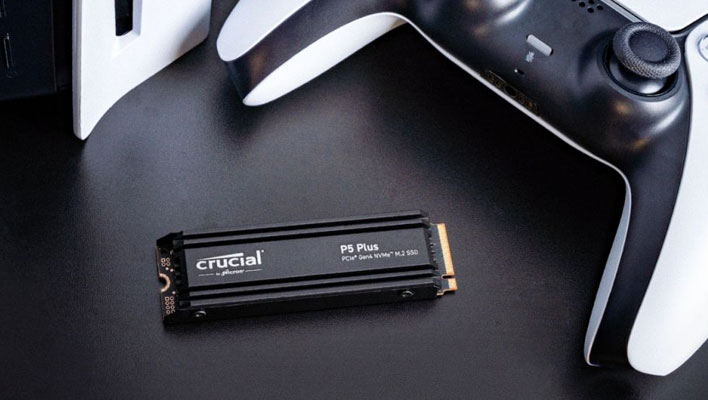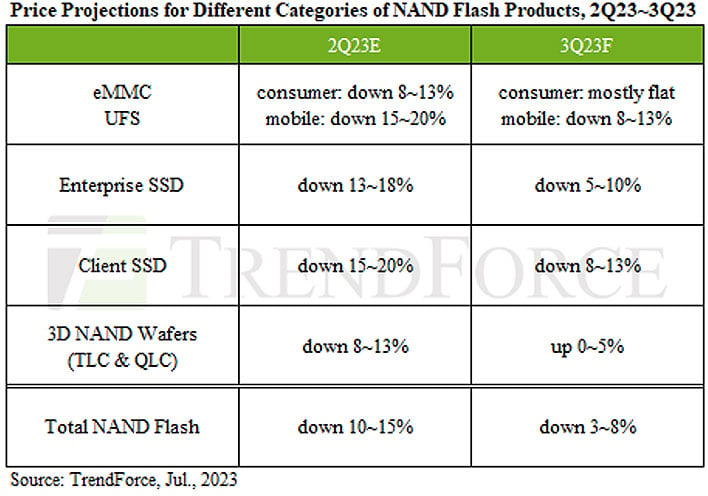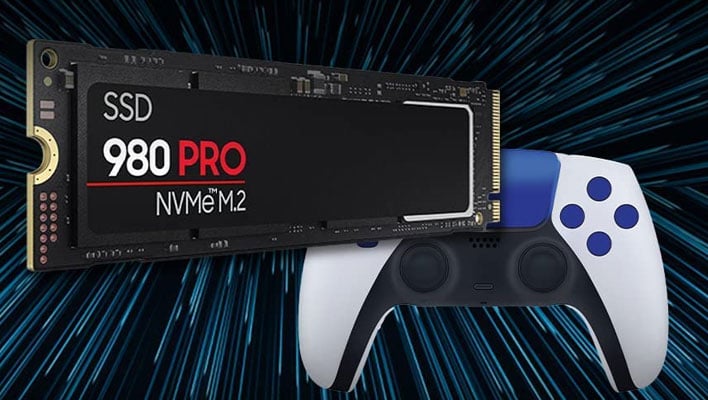Sorry Storage Makers But Falling SSD Prices Show No Signs Of Slowing Down This Summer

Have you looked up pricing on solid state drives (SSDs) recently? If not, you might be surprised to discover how far they've fallen, depending on the last time you checked. That's true even if it's only been a few weeks since the last you time browsed for a storage upgrade. And it could be true the next time you look, as prices are not expected to level out or begin to resemble anything of a rebound this month, next month, or even the month after that.
As consumers, this is a trend we can get behind, especially as storage makers up the ante with increasingly faster SSDs. One of the reasons why prices keep coming down is because of an oversupply of NAND flash memory chips (the same situation applies to the memory chip market). Combined with what TrendForce says is "cautious inventory management by buyers" (which is in reference to OEMs, the market research firm anticipates the state of oversupply persisting throughout the current quarter and maybe even the rest of the year.
"TrendForce predicts that NAND Flash wafers will be the first to see a price hike in 3Q23 as prices for module products such as SSDs, eMMCs, and UFS will likely continue to fall due to tepid downstream demand. Consequently, the overall ASP [average selling price] of NAND flash is forecast to continue dropping by about 3-8 percent in 3Q23, though a possibility exists prices may recover in 4Q23," TrendForce says.
Regarding client SSDs, TrendForce reckons it will be "challenging" for suppliers to reverse the oversupply trend even as laptop shipments begin to recover in the third quarter. Compounding the situation, suppliers are offering "aggressive promotions" to win customers and hit shipment targets to contend with weakened demand, as competition among the NAND flash players intensifies.

What this all means is that SSDs will be even cheaper in the coming weeks and months. According to TrendForce, prices for client drives already fell 15-20 percent last quarter, and they're forecast to drop another 8-13 percent this quarter. Likewise, it expects enterprise SSDs to decline anywhere from 5-10 percent, and it anticipates cheaper eMMC/UFS storage solutions to come down in price again, albeit only in mobile devices (smartphones and tablets, essentially).
Even if prices stayed flat (which it doesn't sound like they will), consumers are in a decent spot at the moment. For example, the Crucial P5 Plus pictured up top is available in 1TB form for just $49.99 on Amazon, versus $89.99 less than four months ago. That's not a pokey drive, either—it's rated to deliver sequential read and write speeds of up to 6,600MB/s and 5,000MB/s, respectively.
The wild card in all this is what PCIe 5.0 models will command. You need a cutting-edge platform (Alder Lake, Raptor Lake, or Zen 4) to make full use of the faster bus specification, and there are not a ton of PCIe 5.0 SSDs available.

That said, PCIe 4.0 models are still plenty fast and falling in price. Here are some examples...
- 1TB Samsung 980 Pro: $59.99
- 2TB Samsung 980 Pro: $99.99
- 1TB WD Black SN770: $59.99
- 2TB WD Black SN770: $112.99
- 1TB WD Black SN850X: $59.99
- 2TB WD Black SN850X: $136.10
- 1TB Kingston Fury Renegade: $79.99
- 2TB Kingston Fury Renegade: $155.25
This author upgraded to the 2TB Kingston Fury Renegade SSD around this time a year ago, but paid $268.32 at the time of purchase. And even as recently as April of this year it was selling for close to $180. If the latest TrendForce report is accurate, expect to see it and other SSDs sell for even less in the weeks ahead.

